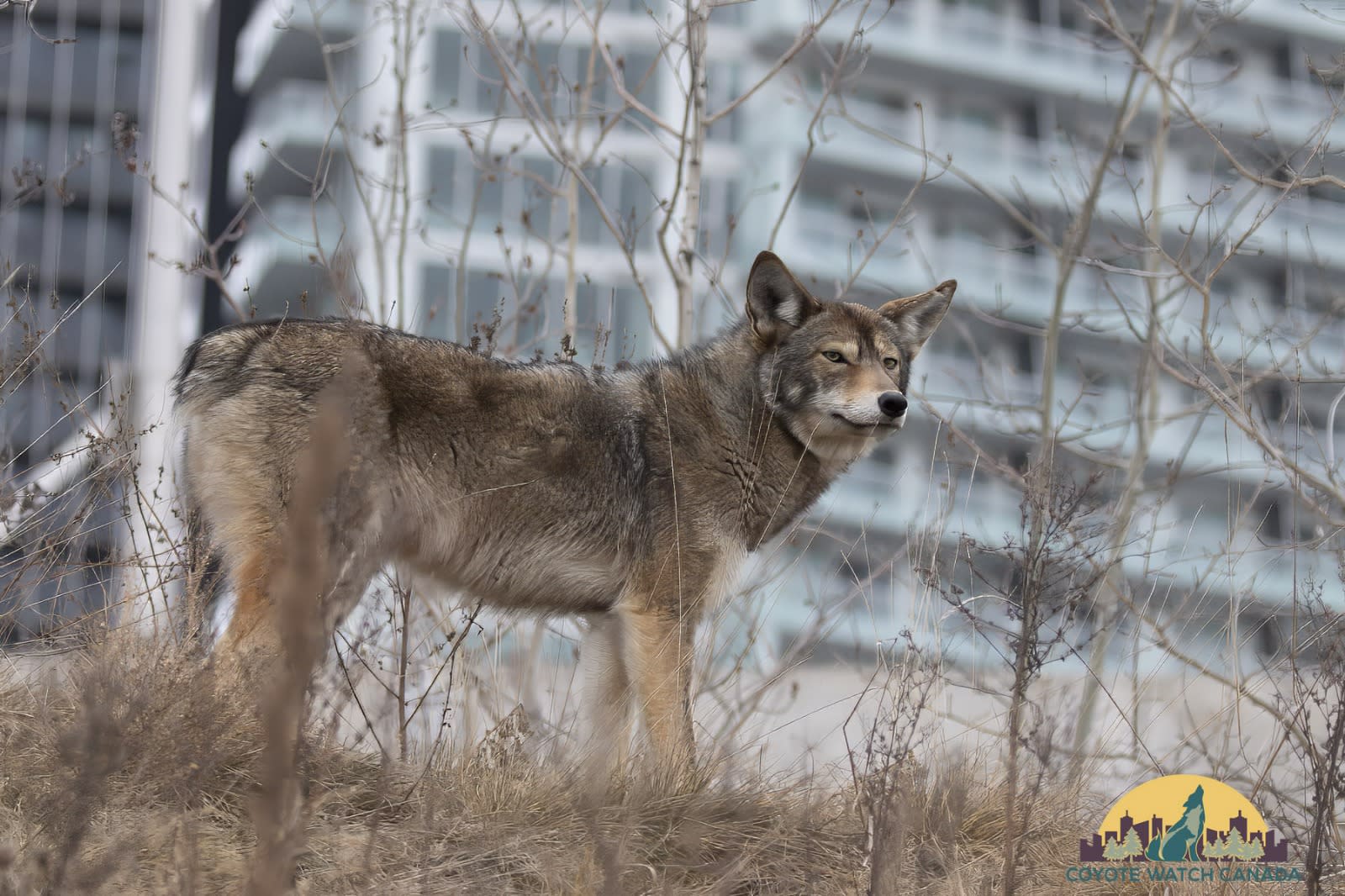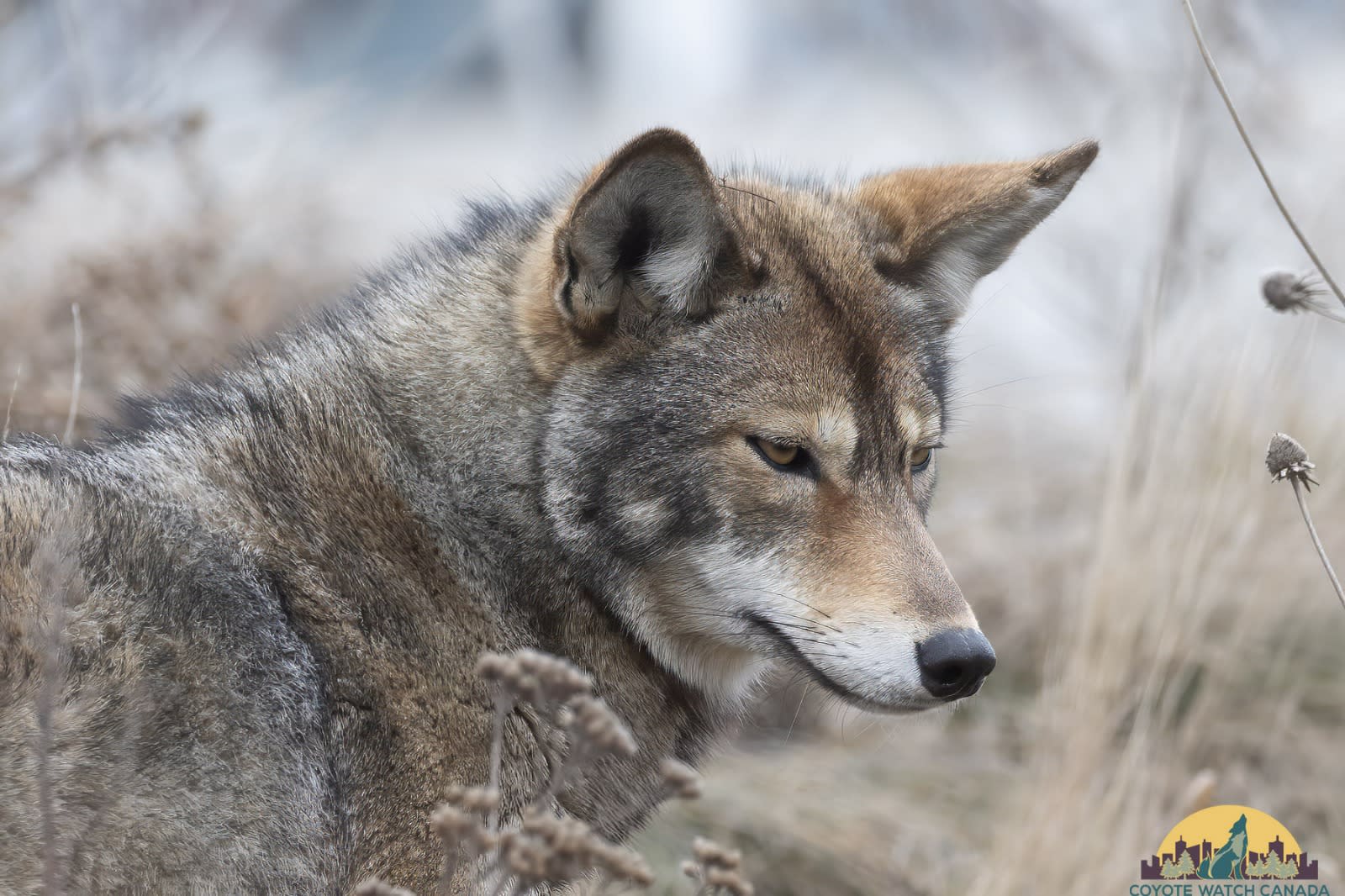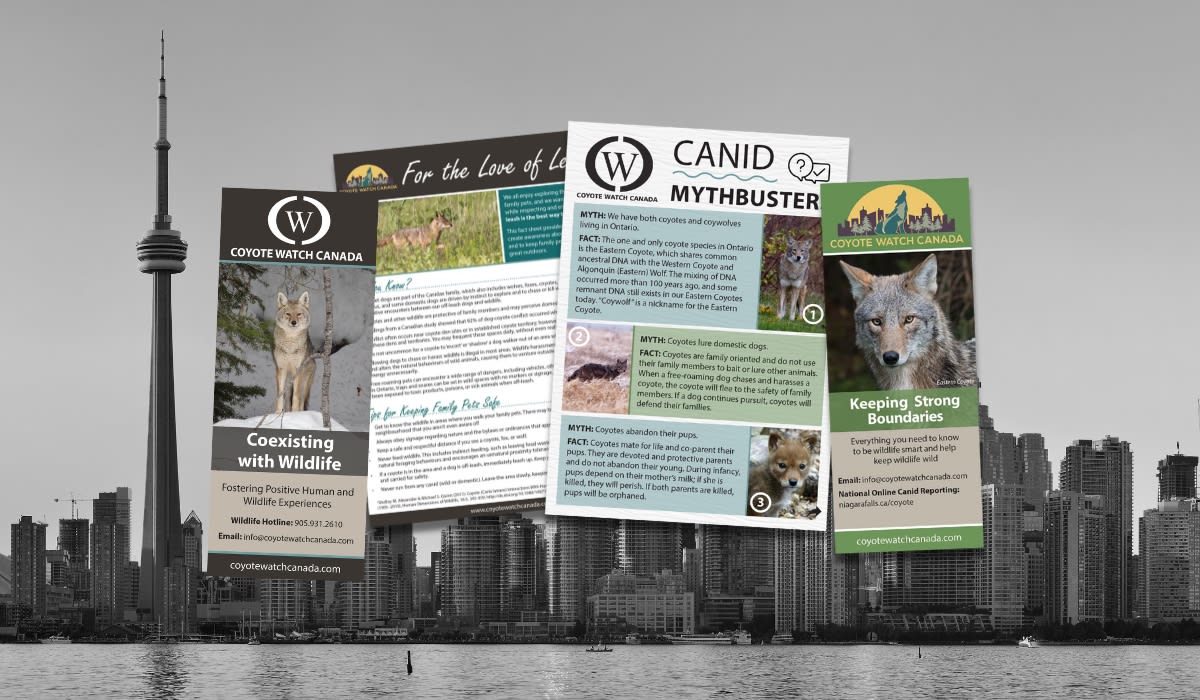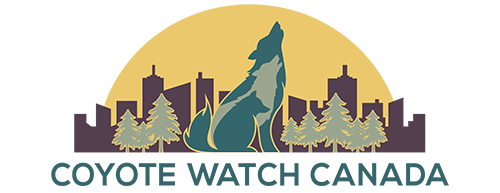
Media accounts of interactions between coyotes and dogs in the Liberty Village community of Toronto have stoked concerns and offered varying degrees of accuracy. As Coyote Watch Canada is on the ground working within the community, we wanted to take a moment to share some of the information we’ve gathered.
We first want to acknowledge that families have lost beloved pets, and we want to be sure that profound grief is not minimized by our team or our efforts.
Our field work to date has revealed a few key factors:
- The significant loss of habitat around Ontario Place and other infrastructure changes has displaced resident coyote families and forced their dispersal.
- Abandoned buildings beside the railway tracks (also a wildlife corridor) attract residents who trespass in this area to run their dogs off leash.
- Three significant access holes in the fencing infrastructure allows for people, dogs and coyotes to travel into the railway track area and into the greenspaces
- We’ve received countless reports of off-leash dogs chasing/harassing coyotes.
- People in the community are feeding wildlife causing coyotes to be more tolerant of people and increasing their proximity to high activity areas.
- Land use access has changed with population growth, unhoused (temporary living shelters), off leash dogs and wildlife.
These elements are contributing to the negative interactions between coyotes and dogs in Liberty Village. Of particular concern and compounding the issues are choices by dog guardians. Illegally off-leash dogs will chase and cause injury or distress to coyotes; this leads to coyotes becoming reactive and defensive toward dogs. Further, extensive evidence shows dog poo bags and exposed feces left in and around the park, which attracts rodents – a favourite meal for coyotes. Additionally, using a short leash will aid in maintaining control of a pet when recreating outdoors. The use of trailcams can provide the much needed in situ to guide next-steps insight to assist the community and wildlife moving forward.
Off-leash dogs are being seen as a threat by coyotes because of all these choices made by pet guardians in the area. The coyotes are under constant pressure from the dogs – but this is not the fault of dogs or coyotes. Given the extreme pressure, coyotes may react to dogs who are on leash as a result.

How to de-escalate negative interactions
Following these tips and making simple changes can make a big impact in preventing more negative interactions:- Choose to use a short six foot leash and report dogs who are off leash. Also report incidents of dogs chasing coyotes or other wildlife.
- Bag up dog feces and dispose using garbage receptacles.
- Never feed wildlife, and report anyone who is. Feeding wildlife teaches the animals to approach people and expect a reward – just like how we train dogs with treats.
- Be kind and compassionate to one another and the wildlife with whom we share our communities.
- When recreating after dark consider wearing a simple head lamp or hat with a built-in mini light.
- Deploy aversion conditioning (AC) or humane hazing. For more information about these techniques please review Keeping Strong Boundaries. Coyote Watch Canada’s Canid Response Team and Toronto Animal Services are actively working with the resident coyote family and they are responding well to AC, retreating and moving away.
- Share Coyote Watch Canada’s resources (you can find them by clicking here).

Coyote Watch Canada will continue to provide boots-on-the-ground support for Liberty Village residents and wildlife; we are actively working with community partners, and Toronto Animal Services is facilitating educational, on-site outreach and AC demonstrations. We appreciate all of the residents who have reached out to us.
By addressing off-leash dogs, wildlife feeding, and using humane hazing techniques, we can teach resident coyotes that dogs are not a threat. And that leads to all of us safely coexisting.
Blog updated February 13, 2025

